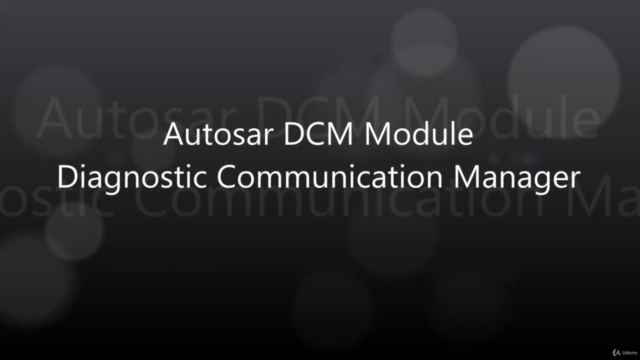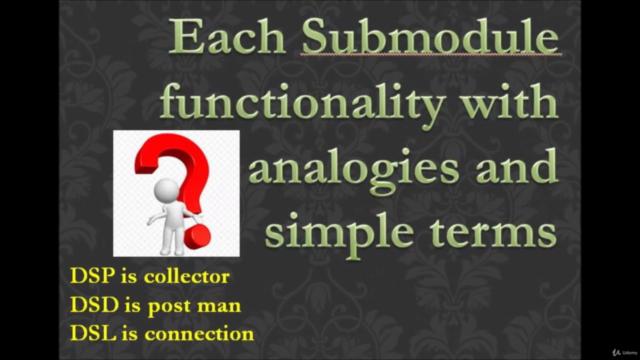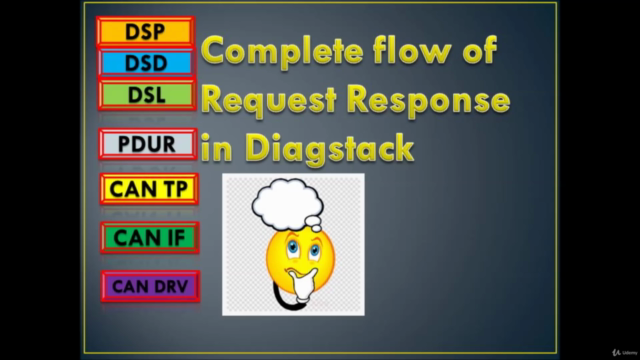Learn Autosar DCM and Diagstack from scratch

Why take this course?
🚗 Master Autosar DCM and Diagstack: Your Path to Automotive Diagnostic Excellence! TDM Learn Autosar DCM and Diagstack from Scratch, your ultimate guide to understanding the intricate world of automotive diagnostics. Dive deep into the core components that make up the diagnostic communication manager (DCM) and its integral counterpart, Diagstack, within the Autosar architecture. With Shyam Bhat as your expert instructor, you'll gain a solid theoretical foundation followed by hands-on practical application of these technologies.
Course Highlights:
-
Comprehensive Introduction to Autosar: Learn what Autosar is and why it's the backbone of modern automotive diagnostics.
-
Detailed Exploration of DCM: Understand the key functionalities, APIs, and configuration processes that make up the Diagnostic Communication Manager.
-
Understanding Diagstack: Gain insights into the architecture and operations of Diagstack, which serves as a critical link in the diagnostic communication chain.
What You Will Learn:
🔹 Theory and Concepts: Master the theoretical underpinnings of Autosar DCM and Diagstack, including their roles within the automotive ecosystem.
-
DCM Functionalities: Explore the various functions performed by DCM, such as event processing, communication management, and more.
-
Diagstack Architecture: Get to know the architecture of Diagstack and how it interacts with other Autosar components.
-
APIs and Configuration: Learn how to work with the APIs used in DCM and Diagstack, as well as the best practices for configuring these systems.
-
Flow and Operation: Understand the flow of diagnostic information within the system and how it operates under different conditions.
Practical Application:
-
Real-World Scenarios: Apply your theoretical knowledge to real-world scenarios through practical exercises and case studies.
-
Hands-On Experience: Get hands-on experience with DCM and Diagstack, using tools and environments that simulate actual automotive diagnostic systems.
-
Project Work: Engage in a capstone project where you'll design, configure, and test a complete diagnostic system.
Why This Course?
-
Industry-Relevant Skills: Equip yourself with the skills that are in high demand within the automotive industry, especially in the field of diagnostics.
-
Expert Guidance: Learn from Shyam Bhat, a seasoned professional with extensive experience in Autosar and diagnostic systems.
-
Future-Proof Your Career: As vehicles become more connected and autonomous, understanding DCM and Diagstack is essential for career growth in the automotive sector.
Who Is This Course For?
This course is designed for:
-
Automotive Engineers: Looking to expand their knowledge of diagnostic systems.
-
Embedded Systems Developers: Who want to understand how their work fits into the larger Autosar architecture.
-
Students and Aspirants: Eager to gain a foothold in the automotive industry with specialized skills.
Enroll now and take your first step towards becoming an expert in Autosar DCM and Diagstack! 🚀
Course Gallery




Loading charts...
Comidoc Review
Our Verdict
This 5-hour Learn Autosar DCM and Diagstack course has garnered acclaim with a rating of 4.42, stemming from its ability to impart solid understanding on DCM module and UDS protocol. Although certain aspects including handwriting and accent pose minor challenges for learners, the detailed exploration of each segment of communication and diagnostic stack is noteworthy. The course's strong theoretical basis could be complemented with more practical examples and hands-on exercises to help further decipher AUTOSAR codes. Ultimately, those ready to delve into this intricate domain should find significant value in the clear explanations of foundational DCM concepts provided here.
What We Liked
- Comprehensive coverage of DCM module and UDS protocol, aiding solid understanding
- Detailed explanation of each aspect of communication and diagnostic stack
- Visual aids and crisp teaching style enhancing clarity of concepts
- Valuable insights on reading SWS documents, useful for projects and colleague discussions
Potential Drawbacks
- Accent can sometimes make understanding difficult, but contextual clues mitigate some confusion
- Writing could be improved to increase comprehension, particularly in handwritten notes
- Lacks real-life test cases and examples that demonstrate AUTOSAR code flow
- Could benefit from more hands-on diagnostic communication configuration guidance